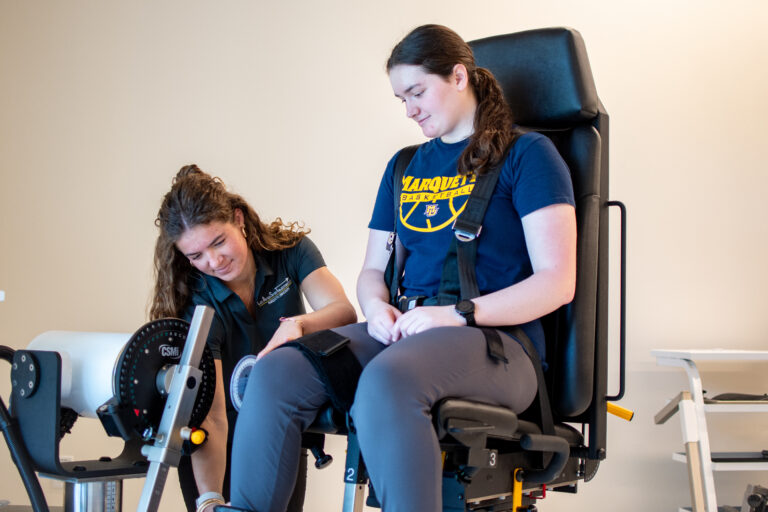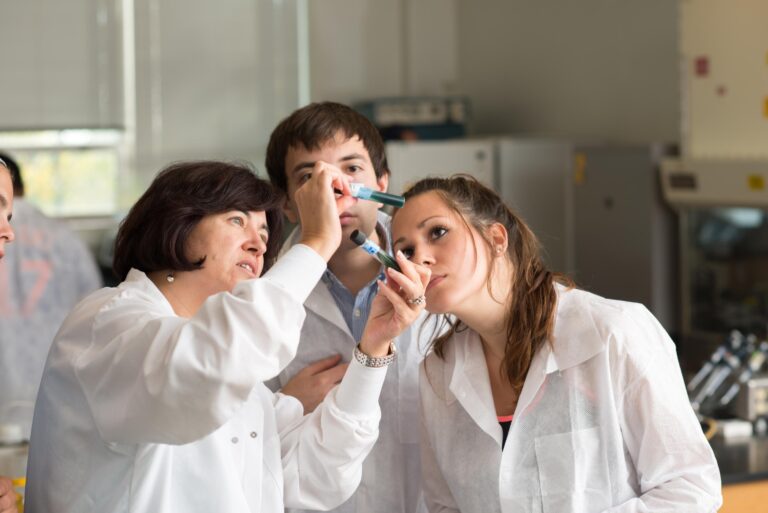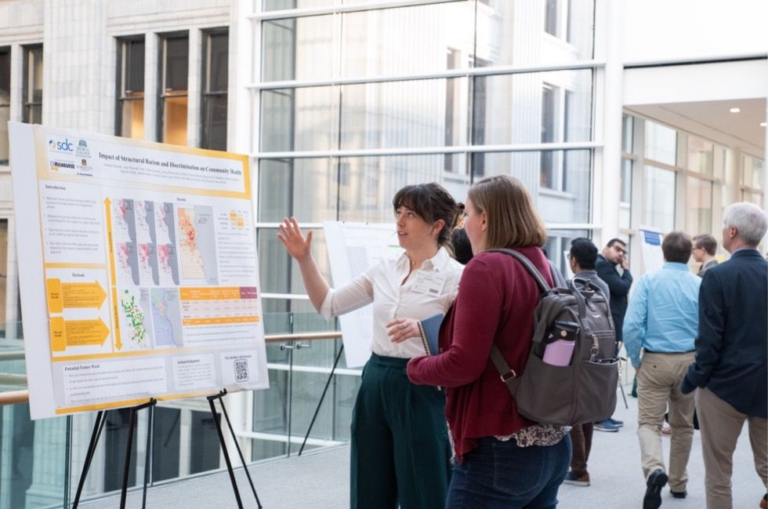Scientifically verified therapies, advanced equipment and clinical experts make the Neuro Recovery Clinic a unique regional resource
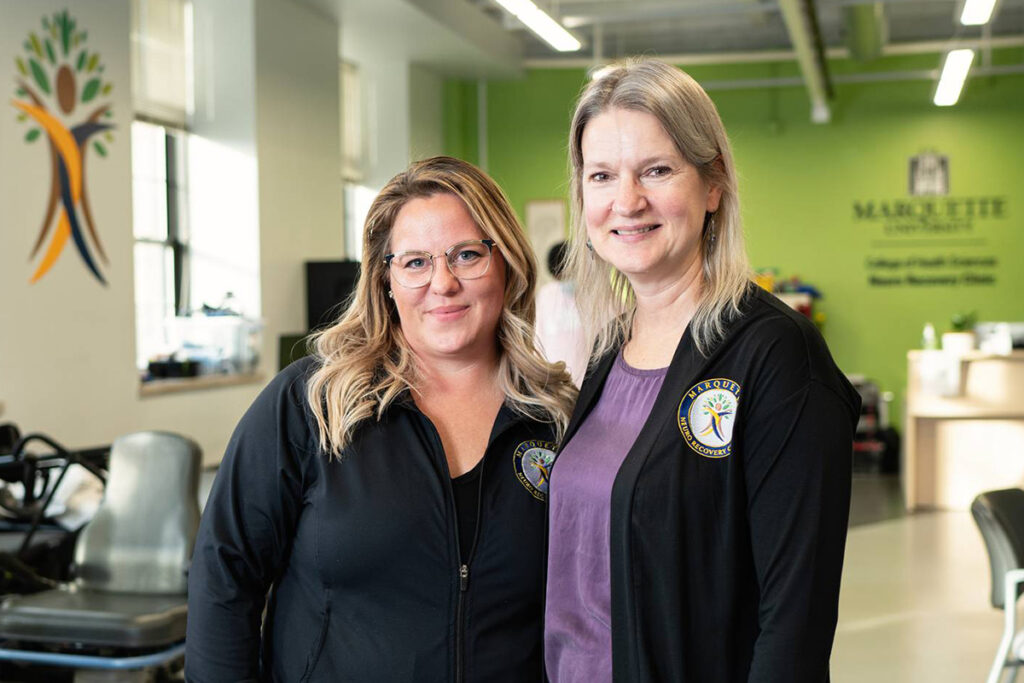
By Carrie Arnold, photos by Kat Schleicher
In Marquette’s College of Health Sciences, progress in addressing neurologic injuries extends beyond research into axonal regeneration or neural feedback loops. It also engages the newest and best existing therapies to help people with a brain or spinal cord injury regain function and improve their quality of life. For patients, the Neuro Recovery Clinic plays a unique role in the region, providing access to empirically tested therapies administered by experts in their fields. It aims to put “recovery within reach” in accordance with each patient’s therapy goals, and is the only one of its kind in Wisconsin.
Walking through the doors of the small-but-impressive clinic reveals a state-of-the-art gym overflowing with specialized equipment, designed specifically for the needs of those with brain and spine injuries. Each has been carefully selected by the clinic’s cadre of physical and occupational therapists based on scientific literature that verifies its value in helping patients recover. The combination of unique “high-tech/high-touch” apparatuses and research-backed rehabilitation is where the magic of the Neuro Recovery Clinic happens, says clinic director Dr. Kim DeChant, H Sci ’05, PT ’07, neuro clinic program coordinator in the Department of Physical Therapy. “We tend to get patients when they’ve gone everywhere else. They’re kind of at the end of their line,” DeChant says. “We have the expertise to pick up where others have left off.”
The goal with all patients is to help them return to the activities they find important, DeChant says. For patients with the most severe types of injuries, that starts with the basics, such as eating, writing, speaking, walking, personal grooming and getting dressed. Others may want to return to an occupation or specific activities such as hiking, golfing or knitting. Although the specific objective may vary, rehabilitation from neurologic injury requires intensive, repeated practice to rewire the neural circuits that were disrupted by injuries or a stroke.
New studies have revealed that even a gravely injured brain or a damaged spinal cord can rewire itself and strengthen existing neural connections to work around the damage — again through the process of neural plasticity. “The NRC has been intentionally designed to incorporate neuroplasticity principles to optimize recovery and slow the decline associated with neurologic injury and disease,” says Dr. Tina Stoeckmann, clinical professor of physical therapy and academic coordinator of Marquette’s Neurological Residency Program. “Advanced technology, specialized staff and frequent, intensive training blocks over many weeks to months are required to push the nervous system to improve and are not offered anywhere else in our region.”
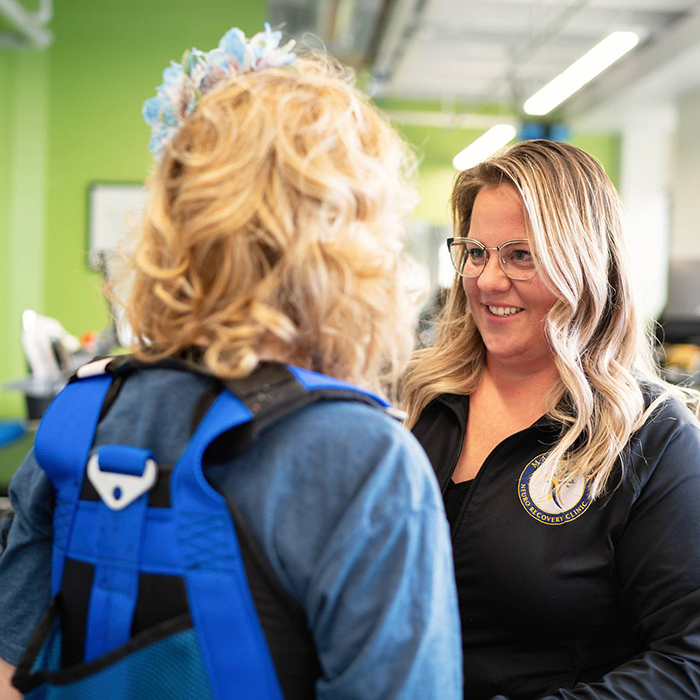
Think of the neurological processes at work, says Dr. Mitchell Adam, H Sci ’18, PT ’20, a doctoral candidate in exercise and rehabilitation science who also works at the NRC, as similar to what happens if a major highway is destroyed with no chance of repair. Traffic may have to divert to little-used dirt trails that allow for vastly reduced speeds and volume. Rehabilitation, Adam says, “is like turning a dirt road into a highway.”
Creating these nervous system bypasses doesn’t happen overnight, and it requires months, even years, of learning new skills, explains Dr. Rose Tilton, NRC occupational therapist. Children don’t learn how to play a sport or musical instrument with a few lessons. Mastery takes years of intense practice. What this means for patients is several hours each day of practice and therapy to bolster those new neurological superhighways.
That’s where the technology comes in, Tilton says. Practicing grasping a spoon or bending down to tie your shoes for hours a day can be grueling and boring. Tilton says that virtual reality goggles can provide novelty and excitement that encourage patients to keep practicing.
Many of the patients of NRC physical therapist Dr. Melissa Dygulski have lost strength and balance as a result of their injuries and need specialized gear to help get them standing and on a path to restored movement. She relies on state-of-the-art treadmills that assist them in developing balance. A special ZeroG system supports body weight and prevents injuries to patients and staff. Over time, as patients’ bodies regain strength, the equipment provides less and less assistance until the individuals are doing all the work on their own. The process can take years, but Dygulski says it can help patients regain a sense of purpose and meaning in their lives.
“It allows you to put those repetitions into practice,” Dygulski says. “Without this equipment, you’re really not even getting close to what the research is recommending in terms of intensity.”
Tilton mentions the case of an individual who arrived at the NRC after a partial spinal cord injury left him with a loss of strength and sensation in his arms. The clinic, Tilton says, offers a range of therapy options to help support recovery. Clinical staff can stimulate arm muscles with precise patterns of electrical stimulation to mimic actions such as brushing hair and teeth – a process that will make the therapy meaningful and optimize the principles of neural plasticity, Tilton says. Virtual reality and robotic equipment provide additional opportunities to practice functional movements that support repetition and patient engagement that can lead to nervous system recovery (or improved functional use of the arms).
“If we give people the proper dosage and intensity of therapy, we’re seeing recovery seven or 10 years after an injury,” Tilton says. Again and again, the NRC finds a pathway to recovery, where one previously hadn’t seemed possible.
Read the other two parts in this series focusing on Dr. Kristi Streeter’s lab here and Dr. Murray Blackmore’s lab here.
